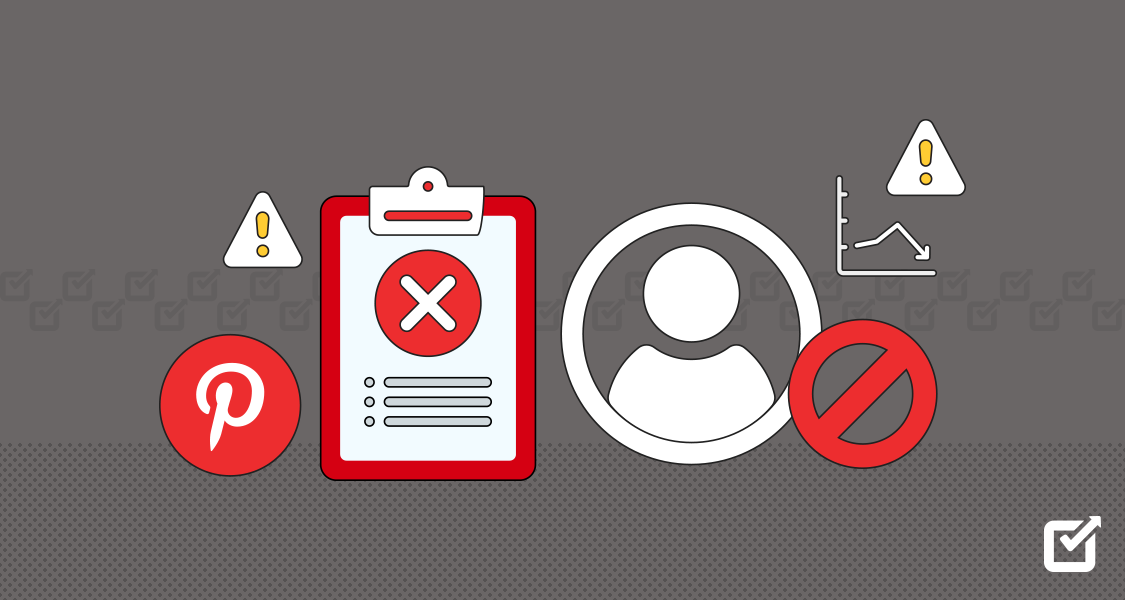Have you seen your favorite Instagram influencer recommending a product? Did you know that they get paid to do that?
Yes, influencer marketing is a popular element of modern-day marketing, where businesses hire influencers to promote their products or services to their followers. Whether it’s on Instagram, TikTok, or any other social media platform, influencer marketing is a way to get introduced to a whole new audience.
To create a successful influencer marketing strategy you need to follow several steps, such as setting your campaign goals, finding your target audience, employing a social media post schedular, identifying the right channels, and so on. However, many brands still need to work on effectively incorporating influencers into their strategies.
In this article, we are going to discuss how to craft successful marketing strategies in deep detail. So let’s get started!
What Is an Influencer Marketing Strategy?
Influencer marketing strategies leverage individuals with established credibility and an engaged audience to promote a brand. By partnering with influencers aligned to your product or service, brands can tap into new networks and earn the positive association that comes from trusted recommendations.
Schedule and Monitor Your Social Media With Social Champ!
Improve your brand with a successful marketing plan and make sure you are leveraging AI to the most. Try Social Champ today!
A strategic influencer campaign identifies influencers that speak to a brand’s buyers and establishes mutually beneficial partnerships. Marketers must do collaborations that consider values and content align.
Unlike traditional advertisements, influencer content comes from an objective third party that consumers see as authentic and relatable. Instead of brands pushing promotions directly to customers, influencers incorporate branded messaging within the content they already create for engaged followers.
This earns brands exposure in front of targeted, receptive audiences. Most importantly, brands must provide influencers the creative flexibility to mention products organically.
The key pillars of an effective influencer strategy include:
- Identifying relevant creators.
- Establishing agreements that give influencers creative control.
- Amplifying content across both influencer and brand channels.
- Analyzing the measurable impact on objectives from awareness to conversions.
When done thoughtfully and strategically, influencer campaigns take advantage of genuine third-party advocacy to cut through digital noise and connect brands with their perfect audience.
In an increasingly crowded market, the credibility and trust of influencer content sets brands apart.
Related Article: Top Influencer Marketing Platforms in 2025
7 Steps to Building an Effective Influencer Marketing Strategy
Influencer marketing tips are important to create an effective and decent strategy for brands looking to increase awareness and drive sales. Studies show that 49% of consumers rely on influencer recommendations when making purchasing decisions.
An effective marketing strategy requires in-depth planning and consideration. You need to identify relevant influencers, build relationships, craft campaigns that resonate with target audiences, and track performance.
Follow these seven steps to develop impactful influencer marketing strategies.
Step 1: Set Goals and KPIs
Like any marketing initiative, start by defining your objectives and key performance indicators (KPIs). Ask yourself:
- What specific business goals do you want to achieve? Consider sales growth, customer acquisitions, and brand awareness.
- How will you measure success? Example KPIs include social engagement, website traffic, conversions/sales, and ROI.
Creating the right influencer marketing strategies is important for any marketing campaign, and influencer marketing is no exception. Without clearly defined objectives, it becomes challenging to measure the success or failure of your campaign accurately. Goals serve as a roadmap, guiding your efforts and ensuring that all stakeholders are aligned in their expectations.
Once goals are defined, it’s essential to establish KPIs that will be used to measure progress and success throughout the campaign. KPIs should be specific, measurable, achievable, relevant, and time-bound (SMART). Here are some common KPIs for influencer marketing strategies:
- Reach: The total number of unique users who have seen the influencer’s content. This can be measured through platform insights or analytics tools.
- Engagement Rate: Calculated by dividing the total engagement (likes, comments, shares) by the total reach and multiplying by 100 to get a percentage. (Total Engagement/ Total Reach *100)
- Click-Through Rate (CTR): The percentage of users who click on a link included in the influencer’s content. This can be tracked using UTM parameters or link-shortening tools.
- Conversion Rate: The percentage of users who complete a desired action (e.g., making a purchase or signing up for a newsletter) after clicking on the influencer’s link.
- Cost per Engagement (CPE): The total cost of the campaign divided by the total number of engagement generated. This helps determine the efficiency of the campaign in driving engagement.
Step 2: Identify Your Audience Personas
Perfect influencer marketing strategies are an essential step in developing a targeted and effective marketing strategy. By understanding the demographics, psychographics, interests, pain points, and behaviors of your target audience, you can tailor your messaging, content, and offerings to better resonate with them. Here’s a step-by-step guide to identifying audience personas:
- Conduct Market Research: Start by gathering data about your existing customers and potential audience. This can include demographic information such as age, gender, location, income level, education, and occupation.
- Segment Your Audience: Divide your audience into different segments based on similarities in their characteristics and behaviors. This could include factors like purchasing behavior, interests, preferences, and challenges.
- Create Persona Profiles: Develop detailed persona profiles for each segment, representing fictional characters that embody the characteristics of your target audience. Include information, such as:
Name: Give each persona a name to humanize them and make them easier to reference.
Demographics: Specify the age, gender, location, income, education, occupation, marital status, family size, and more.
Psychographics: Explore the lifestyle, values, attitudes, beliefs, personality traits, interests, hobbies, and media consumption habits, among others.
Pain Points: Identify the challenges, problems, and frustrations your personas encounter that your product or service can address. - Utilize Data and Analytics: Use data from website analytics, social media insights, email marketing platforms, customer surveys, and other sources to validate and refine your persona profiles. Analyze patterns and trends to gain deeper insights into your audience’s behavior and preferences.
Step 3: Research Relevant Influencers
Researching relevant influencers is a crucial step in building decent influencer marketing strategies. Here are some recommendations to help you identify and evaluate influencers who align with your brand and target audience:
- Define Your Target Audience: Before you start searching for influencers, clearly define your target audience personas. Understand their demographics, interests, preferences, and behaviors to ensure that the influencers you choose can effectively reach and engage with your audience.

- Set Goals and Objectives: Determine the specific goals and objectives you want to achieve through influencer marketing. Whether it’s increasing brand awareness, driving website traffic, or boosting sales, your goals will affect the type of influencers you should collaborate with.
- Identify Relevant Niches and Industries: Identify the niches, industries, or topics that are relevant to your brand and target audience. This will help narrow your search to influencers who specialize in or are interested in those areas.
- Use Influencer Marketing Platforms: Utilize influencer marketing strategy platforms, such as Upfluence, AspireIQ, or Influence.co to discover and connect with influencers in your industry. These platforms provide databases of influencers across different social media platforms, along with metrics like audience size, engagement rates, and demographics.
- Search Social Media Platforms: Use social media platforms like Instagram, YouTube, TikTok, Twitter, and LinkedIn to search for influencers manually. Look for hashtags, keywords, and topics related to your industry, and explore accounts with a significant following and high engagement.

YouTube
Step 4: Outline a Content Strategy
Developing a comprehensive content strategy is important for effectively engaging your audience, building brand awareness, and achieving your business goals. Here’s an outline to help you create a structured content strategy:
Define Your Objectives
- Identify the overarching goals of your influencer strategy, such as increasing brand awareness, driving website traffic, generating leads, or boosting sales.
- Ensure that your objectives are specific, measurable, achievable, relevant, and time-bound (SMART).
Understand Your Audience
- Conduct thorough research to understand your target audience’s demographics, interests, preferences, pain points, and behaviors.
- Create detailed audience personas to guide your content creation efforts and to ensure relevance and resonance with your audience.
Choose Content Channels
- Determine the most appropriate channels for distributing your content based on where your target audience spends their time.
- Consider a mix of channels, such as your website, blog, social media platforms, email newsletters, video platforms, podcasts, and third-party publications for a better influencer campaign.
Content Types and Formats
- Identify the types of content that will best resonate with your audience and align with your brand goals, such as blog posts, articles, videos, infographics, podcasts, webinars, case studies, or user-generated content.
- Tailor your content formats to suit the preferences and consumption habits of your target audience on each channel.
Content Calendar and Schedule
- Develop a content calendar outlining the topics, themes, and types of content you plan to publish over a specific period, such as weekly or monthly.
- Schedule your content publication dates and times strategically to maximize visibility and engagement.
Step 5: Amplify With Paid Promotion
Amplifying your content with paid promotion is a good way to increase its reach, visibility, and engagement. Here’s a guide to help you leverage paid promotion effectively:
Identify Target Audience
- Use audience segmentation and targeting options provided by advertising platforms to reach your ideal audience based on demographics, interests, behaviors, and other relevant criteria.
- Leverage data from your audience personas and customer insights to inform your targeting strategy and ensure that your paid promotion efforts reach the right people.
Choose Appropriate Platforms
- Select the most suitable influencer strategy for promoting your content based on where your target audience is most active and engaged.
- Consider a mix of platforms such as social media advertising (e.g., Facebook, Instagram, Twitter, LinkedIn), search engine marketing (e.g., Google Ads), display advertising, native advertising, or sponsored content.

Twitter (X)
Select Ad Formats
- Choose ad formats that best complement your content and align with your campaign objectives, such as sponsored posts, display ads, video ads, carousel ads, or interactive ads.
- Customize ad creatives and messaging to resonate with your target audience and capture their attention effectively.
Allocate Budget Wisely
- Determine your budget allocation for paid promotion based on your campaign goals, target audience size, advertising platform costs, and expected return on investment (ROI).
- Test different budget levels and allocation strategies to optimize performance and maximize the impact of your paid promotion campaigns.
Step 6: Track Performance
Tracking performance is crucial for evaluating the effectiveness of your content strategy, optimizing your efforts, and achieving your business goals. Here’s a guide to help you track performance effectively and help you to find influencer marketing tactics.
Define Key Performance Indicators (KPIs)
- Identify specific metrics and KPIs that align with your content strategy objectives and business goals. These may include:
- Website traffic: Total visits, unique visitors, page views, bounce rate, and time on site.
- Engagement: Likes, shares, comments, retweets, mentions, and social media followers.
- Conversions: Leads generated, email sign-ups, form submissions, purchases, or other desired actions.
- Revenue: Sales revenue, average order value, customer lifetime value, and return on investment (ROI).
- Ensure that your KPIs are measurable, relevant, and aligned with your overall strategy.
Utilize Analytics Tools
- Implement web analytics tools such as Google Analytics, Adobe Analytics, or other platforms to track website and content performance.
- Use social media analytics tools provided by social platforms (e.g., Facebook Insights, Twitter Analytics, LinkedIn Analytics, or Social Champ for all your platforms) to monitor engagement and audience behavior on social media.
- Leverage email marketing platforms (e.g., Mailchimp, Constant Contact) to track email campaign performance, including open rates, and click-through rates, and conversion metrics.

Step 7: Review, Repeat & Optimize!
Conclude your campaign with an in-depth review to analyze what worked well and what didn’t. Survey your audience for feedback on the activated influencer content and partnership.
Document key learnings, performance data, and audience insights to build upon for the next influencer campaign. Focus on long-term partnerships for maximum impact. The more you work with relevant influencers, your community will grow.
This cyclical process of strategic review and optimization is crucial for continuing success. It will allow you to scale your influencer program effectively.
With these best practices, you can develop authentic influencer collaborations that engage your audience and deliver accurate results.
Featured Article: 150+ Instagram Quotes for Every Moment
Factors Contributing to the Growth of Influencer Marketing
In recent years, influencer marketing has experienced exponential growth, becoming a cornerstone of many brands’ marketing strategies. Several factors have contributed to this rapid expansion, shaping the landscape of influencer marketing as we know it today.
Let’s explore some of the key factors that will help you to make a decent influencer marketing plan for your business.
Social Media Proliferation
The widespread adoption of social media platforms like Instagram, YouTube, TikTok, and Twitter has provided influencers with powerful channels to connect with their audiences.
With billions of users actively engaging on these platforms daily, brands recognize the potential reach and influence of social media personalities to promote their products or services.
The Decline of Traditional Advertising Effectiveness
Traditional advertising methods, such as TV commercials, print ads, and billboards are becoming less effective in reaching and engaging modern consumers. As audiences increasingly turn to ad-blocking software and streaming services, brands are seeking alternative methods to capture their attention.
Influencer marketing plan offers a more authentic and relatable approach to advertising, leveraging the trust and authority influencers have built with their followers.
Authenticity and Trust
Consumers are becoming more skeptical of traditional advertising tactics and are seeking genuine connections with brands. Influencers often provide authentic and relatable content that resonates with their audience, leading to higher levels of trust and engagement.
By partnering with influencers who align with their values and beliefs, brands can leverage this trust to build credibility and loyalty among consumers. A strong influencer campaign can give you endless benefits for your brand.
Targeted Reach and Engagement
Influencers have the ability to reach highly targeted audiences based on demographics, interests, and behaviors. Unlike traditional mass media, which casts a wide net, influencer marketing allows brands to connect with niche audiences that are more likely to be interested in their products or services.
This targeted approach leads to higher engagement rates and better ROI for brands investing in influencer partnerships.
Rise of Micro-Influencers
While macro-influencers with millions of followers still command attention, there has been a growing trend towards micro-influencers with smaller, but highly engaged, followings.
Micro-influencers often have more niche audiences and can offer higher levels of engagement and authenticity compared to their larger counterparts. Brands are increasingly recognizing the value of working with micro-influencers to reach specific audience segments and drive meaningful interactions.
Accessibility of Influencer Marketing Platforms
The emergence of influencer marketing platforms has made it easier for brands to discover, connect, and collaborate with influencers.
These platforms provide streamlined processes for influencer identification, campaign management, and performance tracking, allowing brands to scale their influencer marketing efforts more efficiently.
AI Influencers
The emergence of AI influencers adds another layer of complexity and intrigue to the factors driving the growth of influencer marketing. These virtual personas, powered by artificial intelligence, offer brands unique advantages like consistent content creation, perfect adherence to brand messaging, and the ability to transcend geographical limitations.
While ethical considerations and concerns around authenticity remain, AI influencers hold the potential to further expand the reach and engagement of influencer marketing campaigns, catering to specific demographics with targeted messaging and personalized interactions.
This emerging trend presents an exciting opportunity for brands to explore innovative marketing strategies and engage with audiences in new and unforeseen ways.

A snapshot of Instagram
In Conclusion
In crafting a successful influencer marketing strategy in 2024, it’s imperative to recognize the dynamic nature of the digital landscape and adapt accordingly. By leveraging the power of social media proliferation, prioritizing authenticity and trust, embracing the diversity of influencers, and utilizing advanced tools and platforms, brands can navigate the evolving influencer marketing landscape with confidence.
Furthermore, by focusing on targeted reach, engaging content creation, and measurable performance metrics, you can maximize the impact of their influencer partnerships and drive tangible results.
As influencer marketing continues to evolve, staying agile, innovative, and consumer-centric will be key to achieving long-term success in building authentic connections, driving brand awareness, and fostering meaningful engagement with audiences.















